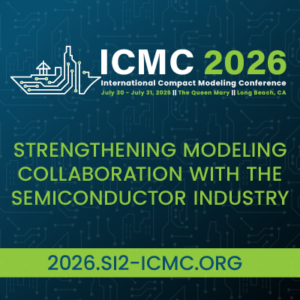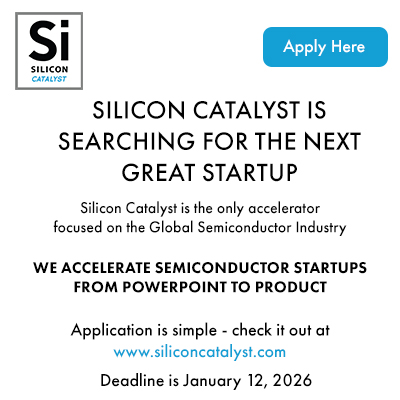Semiconductor conferences are key global events that bring together researchers, technologists, manufacturers, policymakers, and business leaders to collaborate and advance the state of electronics, microelectronics, and integrated circuit technologies. These gatherings range from highly technical, peer-reviewed symposiums to broad industry expos and strategic policy forums.
Conferences play a vital role in accelerating innovation, driving standardization, enabling partnerships, and fostering ecosystem development across every domain of the semiconductor value chain—design, fabrication, packaging, software, testing, and supply chain.
Core Functions of Semiconductor Conferences
Semiconductor conferences are designed to serve multiple stakeholders and purposes:
| Function | Description |
|---|---|
| Research Dissemination | Academic papers and technology breakthroughs in logic, memory, and devices |
| Commercial Launches | Product debuts from chipmakers, tool vendors, and startups |
| Networking & Collaboration | Forums for partnerships, investments, supply chain deals |
| Education & Workforce Development | Tutorials, workshops, and career tracks for engineers and students |
| Strategic Policy & Trade Dialogue | Government panels on subsidies, IP protection, export controls |
Classification of Conferences
Semiconductor conferences can be categorized by focus area, audience, and global reach:
1. Academic and Technical Conferences
These focus on peer-reviewed research and state-of-the-art engineering developments.
Key Events:
-
IEDM (IEEE International Electron Devices Meeting)
-
Focus: Transistor, memory, materials, device physics
-
Audience: Device engineers, physicists, researchers
-
When/Where: December, San Francisco
-
-
ISSCC (International Solid-State Circuits Conference)
-
Focus: SoC, analog, RF, high-speed digital, neuromorphic design
-
Audience: IC designers, students, system architects
-
When/Where: February, San Francisco
-
-
VLSI Symposium
-
Focus: VLSI circuits and technology (parallel tracks)
-
When/Where: June, alternating between Hawaii and Japan
-
-
DATE, ICCAD, ASP-DAC
-
Focus: Design automation, EDA algorithms, verification, modeling
-
Region: Europe (DATE), U.S. (ICCAD), Asia (ASP-DAC)
-
2. Industry Expos and Trade Shows
These are large-scale events showcasing products, tools, and services across the semiconductor supply chain.
Key Events:
-
SEMICON Series (West, Taiwan, Europa, Korea, China)
-
Organizer: SEMI
-
Focus: Manufacturing equipment, automation, metrology, materials
-
Audience: Foundries, OSATs, tool vendors, governments
-
-
Design Automation Conference (DAC)
-
Focus: EDA tools, chip design, IP, SoC methodologies
-
Includes: Research papers, exhibits, startup alley
-
Location: Rotates (often San Francisco, Austin)
-
-
Electronica / Productronica
-
Location: Munich, Germany
-
Focus: Components, systems, semiconductors, manufacturing solutions
-
-
Embedded World
-
Location: Nuremberg, Germany
-
Focus: Embedded hardware/software, MCUs, safety, RTOS
-
Audience: System integrators, automotive engineers, chip vendors
-
3. Specialty Technical Conferences
These focus on emerging and critical technologies in semiconductor design and manufacturing.
Examples:
-
Hot Chips
-
Focus: CPU/GPU/AI chip architecture reveals
-
Audience: Architects, developers, press, academia
-
Where/When: August, Stanford University
-
-
SPIE Advanced Lithography + Patterning
-
Focus: EUV, DUV, nanoimprint, metrology, resists
-
Audience: Process engineers, lithography toolmakers
-
Where: San Jose, CA
-
-
IMAPS & Device Packaging Conference
-
Focus: Advanced packaging (3D ICs, chiplets, interposers, thermal)
-
Audience: Packaging engineers, OSATs, substrate vendors
-
-
Flash Memory Summit
-
Focus: NAND, SSD, storage-class memory, PCIe
-
Audience: Storage architects, hyperscalers, enterprise vendors
-
-
RISC-V Summit
-
Focus: RISC-V hardware, software stack, security, IP ecosystem
-
Audience: SoC designers, EDA/IP vendors, governments
-
4. Government-Industry Policy Summits
These events facilitate public-private dialogue on semiconductor investment, security, and supply chain strategy.
Key Events:
-
World Semiconductor Council (WSC) Meetings
-
Focus: Global coordination on trade, IP, sustainability
-
Attendees: SIA, JEITA, ESIA, KSIA, TSIA, CSIA representatives
-
-
India Semiconductor Mission Conclaves
-
Focus: Fab establishment, talent, design ecosystem, “Make in India” policies
-
Audience: Global suppliers, Indian startups, investors
-
-
EU Chips Act Events (EFECS, Chips JU Forums)
-
Focus: Industrial strategy, IPCEI funding, R&D roadmaps
-
Organizers: AENEAS, EC, EPoSS
-
-
China IC Industry Conferences (WCS, IC China)
-
Focus: National IC investment and self-reliance
-
Conference Highlights by Region
North America
-
IEDM, ISSCC, DAC, Hot Chips, Flash Memory Summit, SEMICON West
-
Strong presence of U.S. academia, fabless firms, and AI startups
Europe
-
DATE, EFECS, Productronica, Embedded World, SEMICON Europa
-
Policy and IP-focused events supported by EU R&D initiatives
Asia-Pacific
-
VLSI Symposium (Kyoto), SEMICON Taiwan, SEMICON China, RISC-V China, ASP-DAC
-
Dominated by foundries (TSMC, Samsung), EDA/IP adoption, and system OEMs
Industry Influence and Strategic Role
1. Innovation Diffusion
-
Breakthroughs in transistor scaling (e.g., GAA, EUV), chiplet interconnects, HBM, and AI accelerators often debut at technical conferences like IEDM and ISSCC.
2. Market Signaling
-
Roadmaps revealed at conferences impact investor sentiment and M&A. For example, NVIDIA, AMD, and Intel use Hot Chips to reveal flagship CPUs/GPUs.
3. Standardization and Ecosystem Building
-
Emerging interfaces (e.g., UCIe, PCIe Gen7), open ISAs (RISC-V), and packaging protocols gain traction through panels and workshops.
4. National Strategy Alignment
-
Conferences now intersect with national semiconductor industrial policy:
-
India, EU, and the U.S. use conferences to showcase incentives and attract investment.
-
Export controls, supply chain de-risking, and technology sovereignty are frequent themes.
-
Recent Trends in Semiconductor Conferences
-
Post-COVID Hybridization: Most events now offer online access, increasing global participation.
-
Startup Inclusion: Dedicated “Startup Zones” or “Pitch Competitions” at DAC, SEMICON, and Hot Chips.
-
AI Everywhere: Nearly every major event includes AI-specific hardware tracks.
-
Workforce Shortages: New sessions on talent development, women in tech, and university outreach.
-
Sustainability: Growing focus on green fabs, energy-efficient chips, and climate impact.
Conference Planning Tools
Organizations often use these resources to plan participation:
-
Conference Calendar Portals: e.g., IEEE Conference Search, SEMI Global Events
-
Call for Papers (CFP) sites: For technical paper submissions
-
Exhibitor Toolkits: Available for marketing teams and PR
See Also
-
Semiconductor Industry Association (SIA)
-
SEMI
-
EDA Tools and Vendors
-
Open Source Hardware (e.g., RISC-V, OpenTitan)
-
Moore’s Law and More-than-Moore Roadmaps
-
Chiplets and Advanced Packaging
-
UCIe Consortium
-
TSMC, Intel, Samsung R&D Activities














Quantum Advantage is About the Algorithm, not the Computer